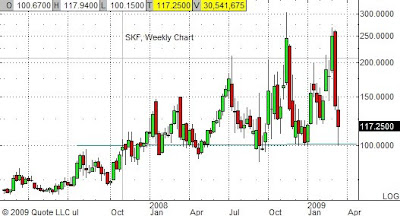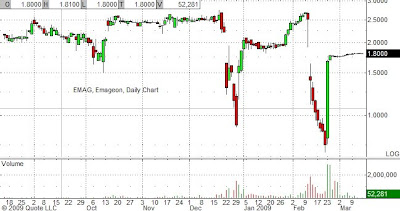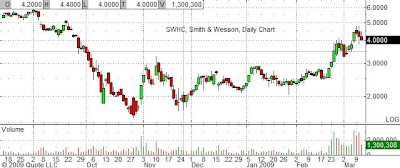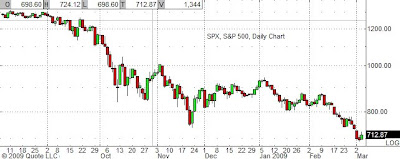The IMN Distressed Debt Summit commenced yesterday in Dana Point, California under sunny skies and mild ocean breezes. In IMN's words, the purpose of the conference is to “provide a forum to explore investing in funds focused on distressed equities and debt to review how public funds and institutional investors aim to capitalize on the hottest strategies emerging in today's equity and debt markets.” Many pension and wealth management funds are down by at least 20% and managers are searching for new ways to make up that deficit.
To this end, seven moderated panels were held with the morning sessions shared with the IMN Public Funds Summit being held concurrently. Panelists drawn from state pension funds and investment management firms discussed topics ranging from identifying distressed debt opportunities to taking advantage of severe dislocations in the structured credit markets. To be sure, the topics covered in these sessions were highly technical and diverse in nature but there seemed to be several themes that kept surfacing throughout the day.
Timing is criticalA major conference theme is that timing absolutely matters in terms of taking advantage of distressed debt. Using a baseball metaphor, Frank Hager, Senior Managing Director of Stone Tower Capital, said that we're in the first inning of corporate debt and the fourth inning of structured debt. Paul Lucas of Schultze Asset Management expanded further by showing which strategies should be employed as a function of the default rate as summarized in the following graph:

Right now, he likes senior secured first-lien bank debt as the best alternative to equity investing citing implied ownership at cheap rates--on the order of one to two times cash flow. Other panelists offered their own ideas. Beth MacLean, a leveraged loan portfolio manager at Lord Abbett, likes the debt on solid BB companies saying that they're trading at 80% of par due to virtually no demand. Michael Flaherman of New Mountain Capital uses a defensive growth strategy of buying companies in acyclical spaces claiming they do well in all economies. Prakash Dheeriya, a finance professor at Cal State Dominguez Hills, takes a more novel approach by suggesting investments in “distressed” assets such as movies (a la
Slumdog Millionaire), sports teams, governments, and currencies.
In the following session on Structured Credit, Dean Di Bias, portfolio manager at Advantus Capital, offered his credit crisis time line:
2009: Stressed Residential Real Estate
2009-2010: Stressed Consumer Credit
2010-2013: Stressed Commercial Real estate
He says that residential mortgage-backed securities (RMBS) offer compelling opportunities as compared with high-yield alternatives, but these opportunities won't last for long, a view shared by other panelists throughout the day. The general consensus is that the 20-30% returns promised by some of these vehicles will only be realized for a couple of years at most and getting into them at the right time is critical. Richard Hocker, Founder & CIO of Penn Capital summed it up by saying “What we hate now we might love eighteen months from now.”
Many managers said that they are starting to buy at the top of the capital structure (AAA and AA rated securities), and it will be a while before they touch commercially-backed paper. John Pluta of Declaration Management & Research likes senior class non-agency prime residential mortgage-back securities. What he does not like is government mandated loan modification programs claiming that they increase risk. His fellow panelists shared his sentiment.
In the “Distressed Debt Investing” session, panelist Mark Zucker, co-founder and co-CIO of Dorchester Capital Advisors, notes that credit investing today is not distressed but more like value investing with a catalyst. He's down on value investing saying “It should be value heaven but it is value hell.”
Another panelist, Ed Burton, a trustee of the Virginia Retirement System, claims that all risk is priced too low. “Now is the time to take on risk,” he said, further stating that his pension fund is very liquid and is able to take on new positions. To him, stocks and debt instruments all look attractive because he feels they are grossly undervalued. He is especially fond of big companies with huge cash reserves. Microsoft, anyone?
Other panelists liked the area of DIP (debtor in possession) financing which is a type of financing extended to companies in the throes of bankruptcy. This type of debt instrument is very attractive now but one needs to sort through them very carefully.
Find the right managerDo you know the difference between a CDO and a CLO? No? I don't either and neither do many financially savvy folks which is why many panelists stressed the importance of selecting a good manager. By their definition, a “good” manager is one who has a long, solid track record in dealing with these complex financial instruments and ranks in the top quartile by performance measures. Naturally the panelists working in this area included themselves among that select group. (No egos here!) But I must say that the trouble in finding the right ones can reward the investor with gains in the 20-30% range which is impressive in any market and even more impressive in this one.
In regards to the previous point on market timing, several panelists pointed out that managers are more adept at market timing, yet another reason to find a good one.
Irv Lowenberg, the treasurer of the city of Southfield, Michigan, has his own take on managers. He prefers to invest with the rising stars in the industry as well as the established stars.
There are a couple of caveats to the task of selecting a manager. Panelist Michael Levitt, Chairman & CEO of Stone Tower Capital, worries about what he terms “style drift,” or a deviation in a fund manager's investing style. He says that style drift has become a problem lately as managers try to make up for lost returns by investing outside their areas of expertise. I'm not sure how one can discern if a manager is deviating from his or her investing guidelines, but it's something to take note of.
Another caveat is in credit analysis. Some managers admitted that they do their own credit analysis instead of relying on the credit agencies such as Moody's. Many point their fingers at the credit agencies as the creators of the credit crisis so I certainly can't blame the managers for wanting to do their own analysis but the burning question is do we have any assurance that these managers are doing an accurate job?
Don't forget to diversifyEchoing Jim Cramer, many panelists stressed the importance of portfolio diversification. In the “Weathering the Economic Turmoil” session, the panelists (all of them representing pension funds) agreed that their portfolios would have suffered more had they not been diversified. However, diversification can't solve every problem. Bob Jacksha of the New Mexico Educational Retirement Board admitted that his absolute return strategy didn't work even with the inclusion of hedge funds.
Parting thoughtsThere seems to be terrific opportunities in the distressed debt arena but the complexity and availability of the instruments involved is out of the reach of the retail investor. Right now, the professional consensus is that getting into the top of the capital debt structure offers attractive returns even in worst-case scenarios. The bad news is that the equity market won't shape up until the credit market stabilizes but the good news is that many conference participants see the beginning of credit stabilization.
To my blog readers:You may see from the new sticker at the top of the page that SeekingAlpha has granted me their seal of approval. Yay!
Begosh and begorrah, I almost forgot it's St. Paddy's day. How much fun is green beer?










